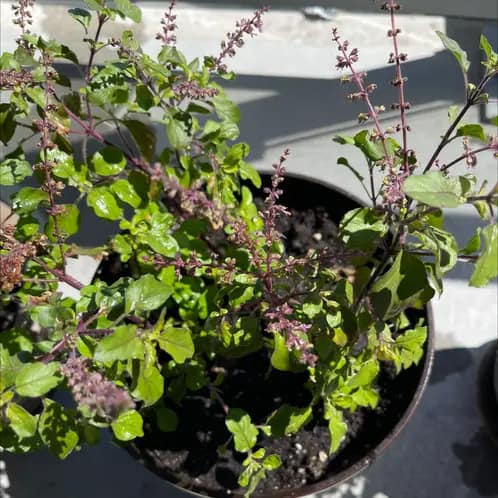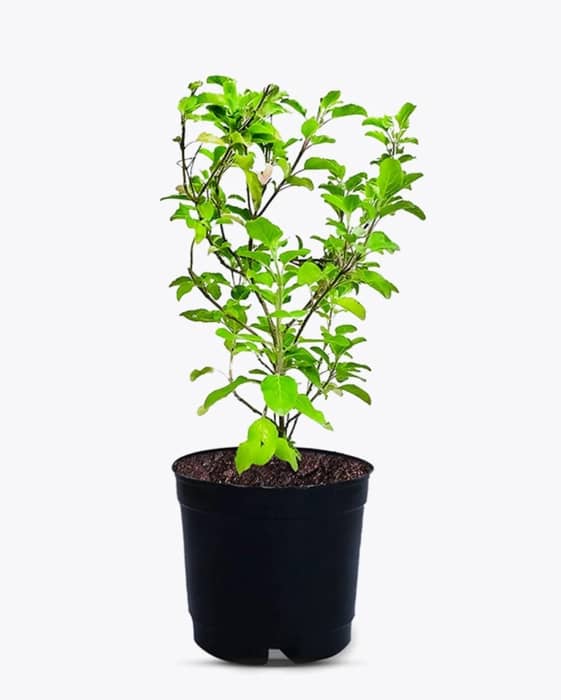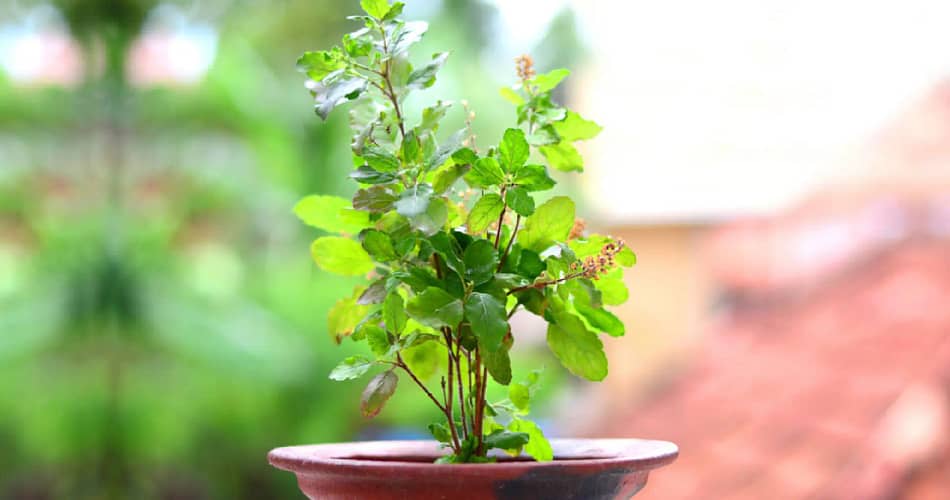Holy Basil, commonly known as Tulsi, is a revered plant in many cultures, particularly in India. It is known for its medicinal properties, aromatic leaves, and spiritual significance. Growing Tulsi at home is not only beneficial for health but also adds a serene ambiance to your living space. This article will guide you through the steps to plant, grow, and care for Holy Basil at home.
Why Grow Holy Basil (Tulsi)?
Tulsi is celebrated for its numerous health benefits, including boosting immunity, reducing stress, and aiding in digestion. Additionally, it is believed to purify the air and ward off negative energy. plant’s leaves are often used in herbal teas, cooking, and traditional medicine.
How to Plant Holy Basil (Tulsi)
Choosing the Right Location
Tulsi thrives in warm, sunny conditions. Choose a spot that receives at least 7-8 hours of sunlight daily. If you are growing Tulsi indoors, place it near a south-facing window where it can get ample sunlight.
Soil Preparation
Tulsi prefers well-drained, fertile soil. You can use a mixture of garden soil and compost to provide the necessary nutrients. The soil pH should be between 6.0 to 7.5.
Planting Tulsi Seeds
- Sowing Seeds: Sow the Tulsi seeds 1/4 inch deep into the soil. You have the option to begin the seeds indoors in containers or plant them directly in your garden.
- Watering: Keep the soil moist but not waterlogged. Water the seeds carefully to avoid displacing them.
- Germination: Tulsi seeds typically germinate within 1-2 weeks. Once the seedlings have 2-3 sets of true leaves, you can transplant them to a larger pot or garden bed.

Caring for Holy Basil (Tulsi)
Watering
Tulsi requires regular watering, especially during the growing season. Make sure the soil stays moist without becoming waterlogged. Water the plant at its base to prevent moisture on the leaves, which could cause fungal infections.
Fertilization
Feed your Tulsi plant with organic fertilizers or compost every 4-6 weeks to promote healthy growth. Do not use chemical fertilizers as they can harm the plant.
Pruning
Prune the Tulsi plant regularly to encourage bushy growth and prevent it from becoming leggy. Remove any dead or yellowing leaves to maintain the our plant’s healthy.
Pest and Disease Management
Nevertheless, it may sometimes suffer from aphids, spider mites, and powdery mildew. Address pest issues with organic insecticidal soap or neem oil. Maintain adequate air circulation around the plant to deter fungal infections.
You can start harvesting Tulsi leaves once the plant has developed a good number of leaves. Harvesting regularly encourages the plant to produce more foliage. Use the fresh leaves for making tea, adding to dishes, or for medicinal purposes.

Benefits of Holy Basil (Tulsi)
Health Benefits
- Immune Booster: Tulsi helps in strengthening the immune system and fighting off infections.
- Stress Relief: It functions as an adaptogen, assisting the body in managing stress.
- Digestive Aid: Tulsi aids in digestion and can help relieve indigestion and bloating.
- Anti-Inflammatory: It has anti-inflammatory properties that can help reduce inflammation in the body.
Spiritual and Environmental Benefits
- Air Purification: Tulsi is known to purify the air by releasing oxygen and absorbing harmful pollutants.
- Spiritual Significance: In many cultures, Tulsi is considered a sacred plant that brings positive energy and wards off evil spirits.
Holy Basil, also known as Tulsi, has different names in various languages around the world. Here are some of them:
- English: Holy Basil, Sacred Basil
- Latin: Ocimum tenuiflorum (formerly Ocimum sanctum)
- Sanskrit: Tulsi (तुलसी)
- Hindi: Tulsi (तुलसी)
- Bengali: Tulsi (তুলসি)
- Gujarati: Tulsi (તુલસી)
- Tamil: Thulasi (துளசி)
- Telugu: Tulasi (తులసి)
- Kannada: Tulasi (ತುಳಸಿ)
- Malayalam: Thulasi (തുളസി)
- Marathi: Tulshi (तुळशी)
- Punjabi: Tulasi (ਤੁਲਸੀ)
- Urdu: Tulsi (تلسی)
- Thai: กุหลาบโบราณ (Kulaboban), โบราณ (Boran)
- Vietnamese: Rau Húng Quế
- Indonesian: Selasih Suci
- Malay: Ruku-Ruku
- Japanese: ホーリーバジル (Hōrībajiru)
- Chinese (Mandarin): 圣罗勒 (Shèng luólè), 乌木香 (Wū mù xiāng)
- Korean: 성 바실 (Seong basil)
These names reflect the widespread cultural significance and uses of Holy Basil across different regions and languages worldwide.

